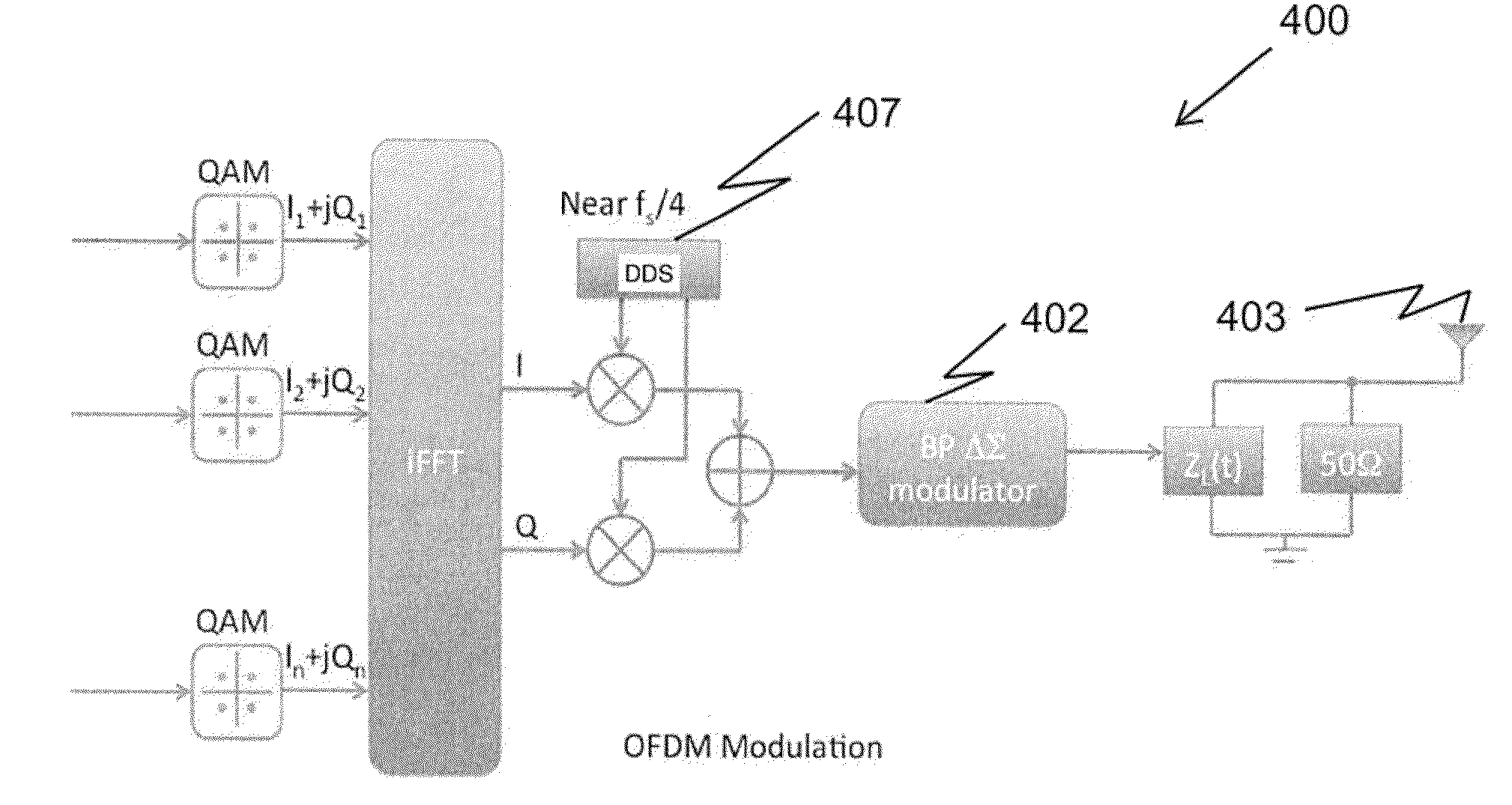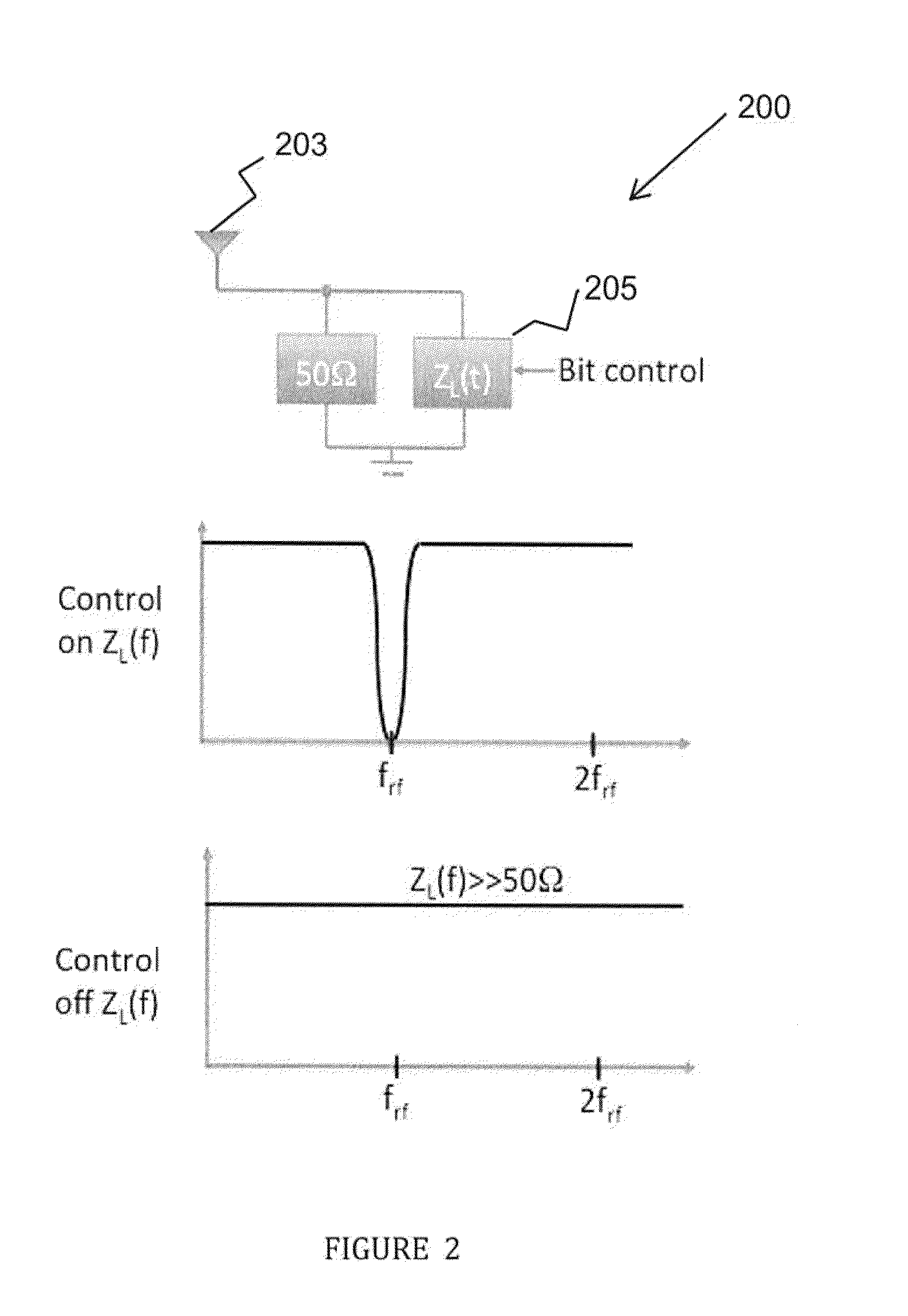Method and apparatus for generating dedicated data channels in backscatter RFID systems using band-pass modulation
- Summary
- Abstract
- Description
- Claims
- Application Information
AI Technical Summary
Benefits of technology
Problems solved by technology
Method used
Image
Examples
Embodiment Construction
[0033]The term modulation as used herein refers to the process by which the radio frequency identification (RFID) wireless terminal, or tag, changes the carrier radio frequency (RF) signal of the reader antenna to convey information. For instance, in phase modulation, data being transmitted from the reader device to the tag is encoded in changes in the phase of the carrier wave sent out by the RFID reader device.
[0034]FIG. 2 shows, in one embodiment, an antenna apparatus 200 in a wireless communication system, such as a radio frequency identification (RFID) communication network, which may be passive or semi-passive, for generating a varying impedance 205 at antenna 203 for backscattering an incoming radio frequency (RF) signal, such as from a reader device of the RFID network. Antenna 203, which may be part a tag terminal of the RFID communication network, backscatters the incoming reader device, or carrier, RF signal in accordance with its reflection coefficient (Γ) characteristic...
PUM
 Login to view more
Login to view more Abstract
Description
Claims
Application Information
 Login to view more
Login to view more - R&D Engineer
- R&D Manager
- IP Professional
- Industry Leading Data Capabilities
- Powerful AI technology
- Patent DNA Extraction
Browse by: Latest US Patents, China's latest patents, Technical Efficacy Thesaurus, Application Domain, Technology Topic.
© 2024 PatSnap. All rights reserved.Legal|Privacy policy|Modern Slavery Act Transparency Statement|Sitemap



